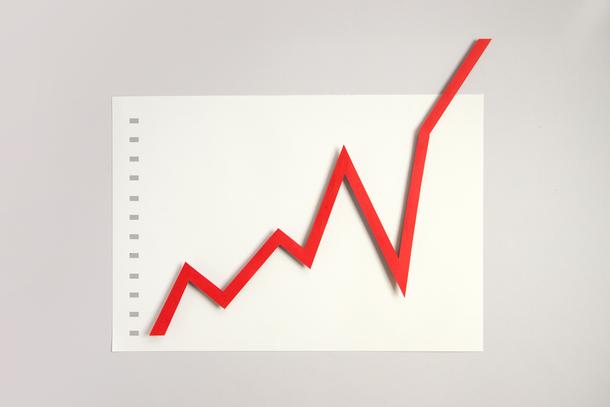AS January goes, so goes the year. That’s what one old stock market adage says and, if there’s any truth in it, then we could be in for a tumultuous 12 months. Already this year, investors have had to weigh up a barrage of unsettling news, including a surge in military tensions along the Russia-Ukraine border.
Clear signs from the world’s most important central bank, the Federal Reserve, that US interest rates will probably rise in March, capped a challenging January.
In this environment, it’s all too easy to be blinded by the day-to-day market noise. However, it’s also worth assessing the prospects for your investments at regular intervals, and recent events could have a bearing on that. As ever, maintaining a focus on your longer term investment goals is most important.
Here are some of the key points to consider for the year ahead.
Technology stocks face a more difficult year
America’s Nasdaq Index, which has an especially high exposure to technology companies, has proven to be the first financial victim of 2022. It lost more than 10% during January1.
To put that into some sort of context, the Index did serve investors very well in 2021 and even better the year before2. Companies like Apple, Facebook and Microsoft grew and grew during lockdown, as we stayed at home to work and shop and enjoyed more online entertainment.
But for the Index to lose a proportion of those gains so quickly is disappointing. Netflix drew some of the blame a week ago, after the company issued a weaker-than-expected forecast of how many new subscribers it would win in the second quarter.
However, to a large extent, this was probably a bit of a sideshow. With Netflix, we’ve been here before. The real problem is that rising interest rates are bad news for high growth companies with lots of cash flows and earnings anticipated far out into the future. Higher interest rates in the meantime mean those cash flows and earnings are worth less to investors today.
Another problem is increasing competition from other parts of the stock market. Traditionally, in an environment of uncertainty and patchy economic growth, technology companies have commanded a premium price because of their ability to grow their earnings year in, year out, whatever the economic weather.
With the world economy recovering and both inflation and interest rates rising, more traditional types of company have been returning to favour, including oil producers, banks and the miners of metals and other commodities.

Shares are still the place to be
Interest rates may be rising, but they probably won’t be rising far compared with history. According to the Bank of England in December, rates are expected to be at around 1.1% and 0.7% respectively in the UK and the US at the end of this year3. In other words, US rates should still be lower than their pre-pandemic level of 1.75% for another year or more.
In an environment where inflation is topping 5%, these levels are not nearly enough to be attractive to investors. Shares, on the other hand, can still be expected to generate competitive returns. In the UK, the stock market offers an attractive dividend yield of over 3% plus the potential for capital gains over the medium to longer term4.
It’s undoubtedly riskier investing in shares than cash or bonds, but neither of the latter two asset classes can offer investors anything like inflation-busting returns (with the notable exception of index linked bonds).
America is where the growth is
Corporate America has an enviable reputation for delivering the goods (and services). In particular, it has produced the majority of the world leading technology companies we see today.
Partly because of this, the US continues to dominate the benchmark indices that global fund managers use as a reference. For example, the US accounted for no less than 61% of the MSCI All Countries World Index as at the end of last year5.
US company earnings probably grew by a highly impressive 45% last year, as the world’s largest economy emerged from lockdown. Understandably, growth this year from a much higher starting point will be considerably less – something of the order of 9%6. That’s still impressive though and indicative of the world’s largest economy forging ahead.
The rotation to value stocks may not last
The recent relative strength of shares in companies sensitive to economic growth is consistent with expectations that the money injected into the world’s economies over the past couple of years plus the savings people made during the pandemic will bring about a sustained period of higher inflation.
However, once markets become more accustomed to this new normal of higher inflation and interest rates, the allure of value stocks – stocks which rank highly in terms of factors such as dividend yield and a low valuation compared to balance sheet assets – could wane.
If supply chain pressures relent and interest rates do their job, then inflation may peak later this year. The focus could then return to the companies leading the way towards the big technological advances that lie ahead. Like most short-term market moves, it’s a difficult call for most investors to make.
Technology shares are cheaper than one month ago
Long term shifts in the economy and society will prevail, benefitting those technology companies best able to deliver the products and services people need or want. It remains the case that many US technology businesses have competitive advantages that are difficult to replicate. This week, the respected technology investor and founder of Ark Invest Cathie Wood was quoted as saying “innovation is on sale”7.
That’s quite a bold statement, but it could be right. The latest results we have seen from US technology companies give no clue that the underlying fundamentals are flagging, even taking into account the new subscribers disappointment at Netflix. Apple’s blowout results on Thursday were a case in point.
Market volatility shouldn’t be feared, it should be pounced upon
Markets are undeniably ruffled. Shifts in market leadership have been coming thick and fast over the past month or so, as investors have felt the need to reassess the relative merits of fast growth companies, businesses with defensive earnings and those best placed for a fast-paced economic environment (cyclical companies).
A volatile start to the year is not without precedent. Neither is a temporary loss of nerve in the technology sector. Last spring we saw a sizeable wobble for reasons similar to those we see today: concerns that an end to the long bull run in technology shares was imminent. Markets went on last year to prove that thesis premature.
History shows that some of the best buying moments come about in volatile markets, which create additional stock mis-pricings as compared to periods when markets are moving steadily higher.
Saving a set amount regularly into stock market investments works so well partly because it automatically mops up more shares when prices have fallen and saddles investors with fewer “expensive” shares after prices have risen.
Uncertainty calls for a more balanced investment approach
A combination of investments in undervalued companies exposed to improving economic conditions plus some holdings in tech names that have suffered during the recent sell-off could prove an excellent route to smoothing returns. It’s worth noting the FTSE 100 Index, with its bias towards defensive companies, has ended January on a pretty firm footing.
Investors can construct a portfolio that is diversified in terms of investment style by choosing funds from Fidelity’s Select 50 list. For example:
The Fidelity Global Special Situations Fund has a large exposure to US companies and some of the world’s largest tech names. Large fund positions currently include: Alphabet (Google), Amazon, Apple and Microsoft.
On the other hand, the Artemis UK Select Fund is a value-tilted fund that should benefit from a continuation of Britain’s recovery and an exposure to survivor companies from the pandemic now seeing less competition. Current large holdings include: the alternatives investment company 3i, Barclays and the research and manufacturing business Oxford Instruments.
Both funds feature among Tom Stevenson’s four Fund Picks for 2022.




